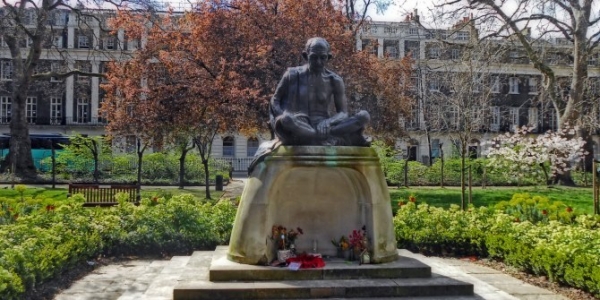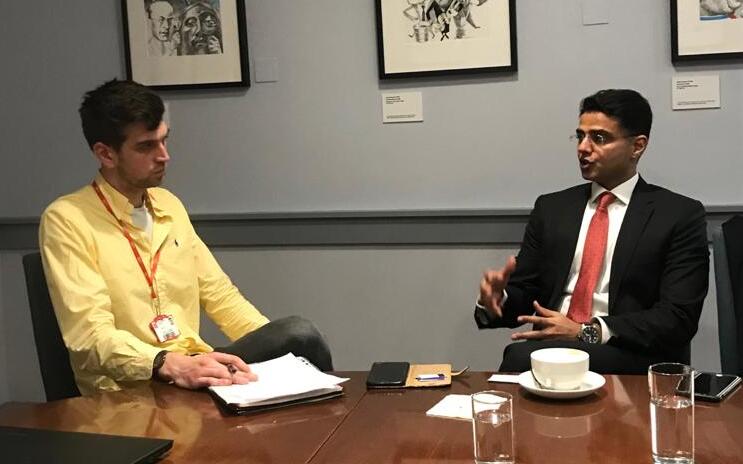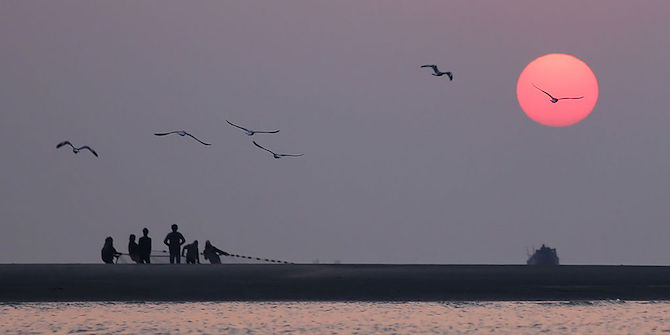 At the end of January, Professor Susheila Nasta gave a talk on how Indians mingling in intellectual circles in London influenced British perspectives and angles of vision as part of the South Asia Centre Colony as Empire series. Here she talks to Sonali Campion about the language of Empire, teaching colonial history and narratives around immigration.
At the end of January, Professor Susheila Nasta gave a talk on how Indians mingling in intellectual circles in London influenced British perspectives and angles of vision as part of the South Asia Centre Colony as Empire series. Here she talks to Sonali Campion about the language of Empire, teaching colonial history and narratives around immigration.
SC: You are speaking tonight on the topic of the ‘Bloomsbury Indians’. How did the presence of colonial subjects in British artistic circles change the language around the British Empire?
SN: A lot of the subjects in London were radicals politically, they were people who multitasked. They may have been writers but they were also active in organisations like the India League; they were putting on plays but also speaking on the BBC. So they were vocal on a number of different platforms. Through their exchanges they managed to engage quite a lot of the British Left. People in this country became aware of the fact that the Raj was very unequal, and that just as the working classes in Britain were experiencing conditions which were unacceptable, so did people in India. They began to see a correlation, so in that sense the language started to change.
Of course there had always been a fascination with India anyway, it wasn’t a new thing. The two countries were intertwined. In a sense many of the Indian writers coming over here already had a very good sense of London, it wasn’t like coming to a new city because it had already been outlined for them through what they read.
Michael Foot describes great novels as ‘political acts of the highest importance’ when he was talking about Mulk Raj Anand. How do you find that the colonial education influenced political dialogues?
Michael Foot was a friend of Mulk Raj Anand, who wrote particularly politically directed novels – although not exclusively. The point about colonial education generally if you are doing it through an Anglophone process is that whether you are Indian or English, or Caribbean or Nigerian or wherever you are from, you’ve read the same books so you share a language already.

When you start to write your novels, or you become a politician – and Nehru is a case in point, as was Gandhi – you’re wrapped up in the British Constitution. They had all the tools to argue against Britain and use it against itself at times. There was a kind of synergy that came from a shared language and relationship, which persists today despite all the restrictions on visas and so on. This comes not only from arts and culture but DNA and intermarriage, or mixed race children, or people moving in between the two countries, or living in both. You had people like Lawrence Durrell growing up in India, coming to Britain but very close with all the Indians in Bloomsbury. Why was that? He was, if you like, a white Indian in Britain.
When independence happened was there a noticeable shift in the way that the former Raj and Britain wrote about each other?
My big argument has always been that it was almost – like Jean Rhys, the Caribbean writer, once said – “as if a curtain had fallen”. In 1945 when everybody started going back to India, or 1947 at independence, it was almost as if that the two had never been together. Certainly in Britain you would have comments about Anand for example by V.S. Pritchett like he had just disappeared. There is no mention in any of the literary histories of people had been here for 20-30 years, mixing in all these literary groups. Obviously it was unequal, it always was because they were colonials. But they were British subjects too, and had been very visible in influential circles.
I think there’s still quite a big gap. In the case of Britain it’s almost as if they wanted to block out that story and forget. So the next story which followed after partition is “look at all these unemployed, low educated Pakistanis, coming to Britain to take jobs”, even though Britain had actually advertised after the war for cheap labour. That turned into the floods of immigrants narrative.
Colonial history is notoriously absent from British education, that’s beginning to change, but it still tends to focus on who did what where when etc. How do you think it can be made more inclusive of these rich cultural dialogues that you’ve specialised in bringing out through your research projects?
One of the things we did was to tour a British Library/Open University exhibition in India. The primary aim was to take it to the general public, but that included workshops in schools. In India the school children knew about Nehru and Gandhi, and maybe some of the others like Krishna Menon, but they only knew the Indian stories. They didn’t know about these figures as British subjects.
One of the advantages was that we didn’t tell them what to think. We just gave them some archival information then put them in groups and told them to discuss it and see what they felt about it. What might it be like to be an ayah here in the East End having been dumped after crossing the sea a few times with an English family? What it might be like to be someone campaigning for independence? We also explored bilingualism and the kind of global vision that many of the Indians had when they came to Britain, which quite a lot of the British didn’t have at that time. What was important was the broader sense of global citizenship.
Which seems to be what a lot of the current narratives are pushing back against at the moment…
Yes. It’s got to be permeated all the way through the education system. The question of how you teach it is also important – think of it like the lens when you’re taking a photograph. When I did a photographic history of Asians in Britain one of the interesting things about it was going through thousands of images which were not in places you’d expect them to be. You wouldn’t find a file in Getty saying ‘Indians’, the photos were all over the place. The original captions were also unbelievably racist in many cases, so we had to re-write those. Even photographers taking photos of, say, an immigrant family arriving at Heathrow, would frame the images in a particular way to suit a specific narrative.
How do you think the narrative around South Asians arriving in the UK has changed over time?
I don’t think there was a lot of narrative around arrivals until Britain started blocking its borders when issues of nationhood and identity began to take precedence. Before that there were the elites, but the elites had always been here, for example the Maharajahs and so on. In the 19th century the greatest number of subcontinentals who were here belonged to the working classes. Once Suez was opened you had far more students coming through. Then really there’s a gap around the 1950s and early 1960s before the discourse and rhetoric about hordes of people developed. I think this has unfortunately re-emerged with Brexit. It’s there under the surface and ignites, whether it is as a result of refugees or reactions against others who apparently aren’t like ‘us’.
Finally, you founded Wasafiri in 1984 and it is now heralded as Britain’s premier magazine for international contemporary writing. What were your ambitions in establishing it and how far have they been realised?
It started just after Maggie Thatcher came into power, when there was a huge need for all children to have access to stories that weren’t offering a single narrative about Britain, but highlighting that there were many perspectives. At that time there was nowhere that writers of African/Caribbean/Asian/Black British decent could really get serious reviews of their work. So it was partly a political/educational project, partly a literary thing. Since then it has gone more in the direction of literary, but it is still trying to take writing across worlds and open people’s minds – as Rushdie said. There are ups and downs because the international can become very expansive, but it’s still relevant. Even more so now I’m afraid.
The South Asia Centre Colony as Empire series continues throughout the 2016/17 academic year. Details for upcoming events are available here.
Note: This article gives the views of the author, and not the position of the South Asia @ LSE blog, nor of the London School of Economics. Please read our comments policy before posting.
About the Authors
 Susheila Nasta is professor in Modern Literature at the Open University. She has earlier held teaching and research positions at Queen Mary University of London, Cambridge and the University of Portsmouth. Nasta has always been interested in issues of cultural difference and diversity having grown up in India, Britain, Holland and Germany. In 1984, she founded the famous literary magazine, Wasafiri: The Magazine of International Contemporary Writing.
Susheila Nasta is professor in Modern Literature at the Open University. She has earlier held teaching and research positions at Queen Mary University of London, Cambridge and the University of Portsmouth. Nasta has always been interested in issues of cultural difference and diversity having grown up in India, Britain, Holland and Germany. In 1984, she founded the famous literary magazine, Wasafiri: The Magazine of International Contemporary Writing.
 Sonali Campion is Communications and Events Officer at the South Asia Centre. She holds a BA (Hons) in History from the University of Oxford and an MSc in Comparative Politics from LSE. She tweets @sonalijcampion.
Sonali Campion is Communications and Events Officer at the South Asia Centre. She holds a BA (Hons) in History from the University of Oxford and an MSc in Comparative Politics from LSE. She tweets @sonalijcampion.








Its the same with many commonwealth states, but English speakers of Britain, forgot that.